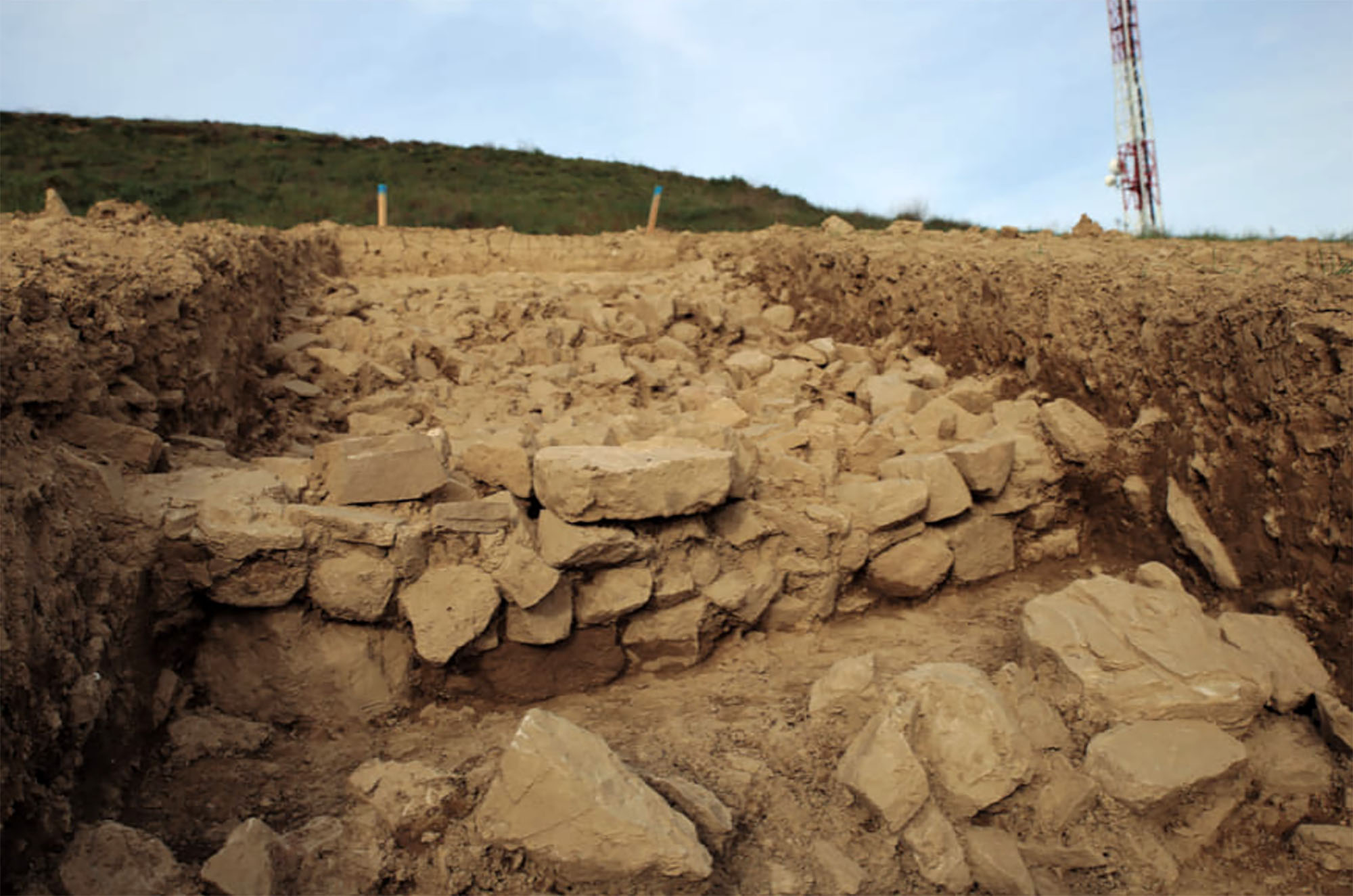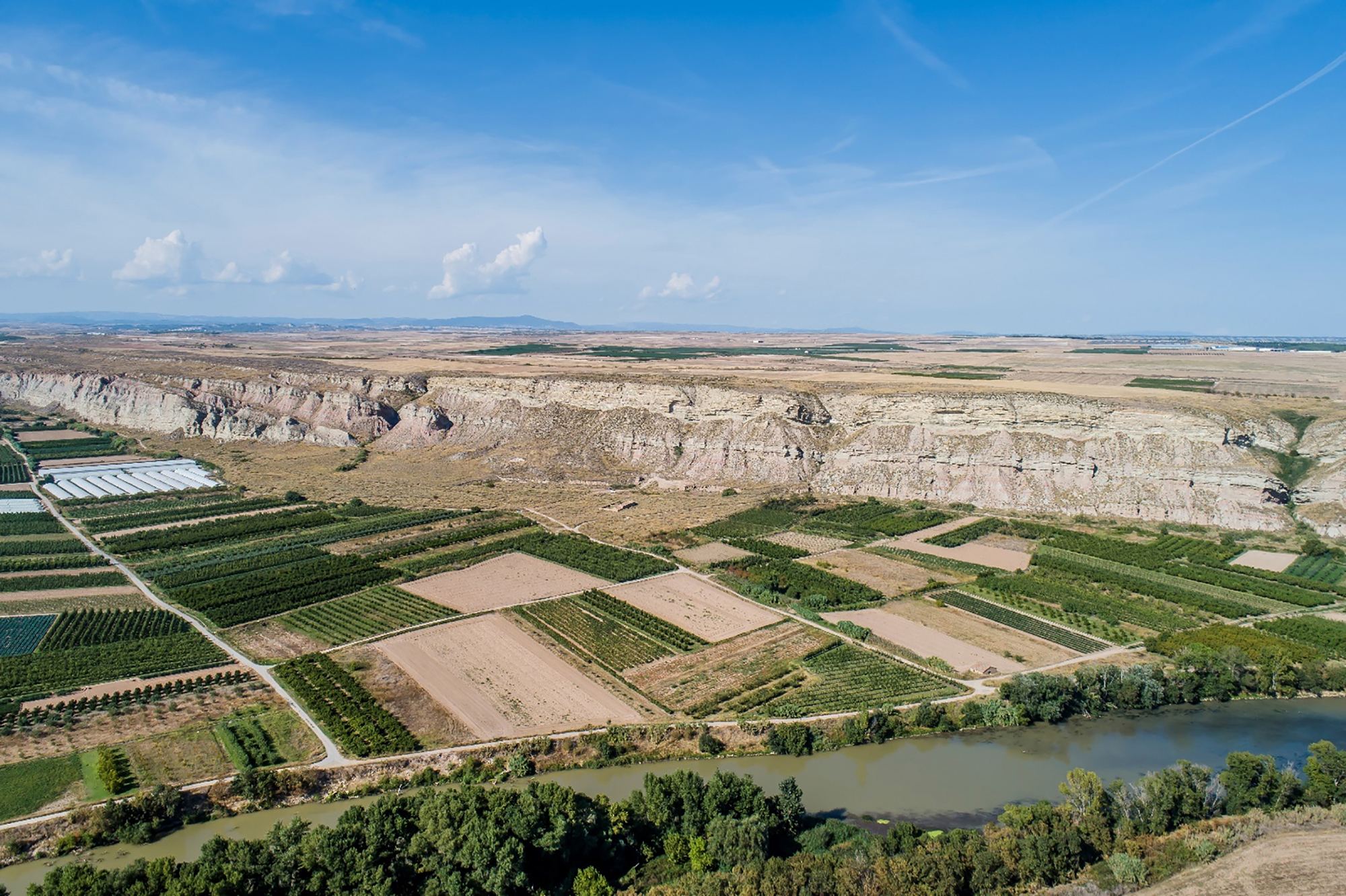They discover remains of another Basque town in Navarra and denounce that the works of the TAV can destroy them
- In the village of Muru Artederreta, on the hill of Murugain, the wall of an Iron Age village has been discovered while taking samples for TAV works. The community of neighbours denounces that the construction of the mouth of a rail tunnel would destroy part of the wall.

In the town of Muruarte de Reta, between Noáin and Tafalla, remains of another of the most Basque villages in Navarra have appeared. The wall of the village located on the upper of Murugain, where the previous surveys were being carried out for the works of the TAV to be crossed.
There are also bones, ceramic fragments from the Iron Age and "terra sigillata" and "tégula" or Roman tiles.
In particular, archaeological samples have been made to the south of the promontory, due to the forthcoming beginning of the works of the TAV. In this place, it is intended to build a mouth for a macroinfrastructure tunnel and Friends of Muruarte de Reta denounces that the works can destroy part of the wall.
This association has noted in her Facebook account that in the many samples that have been made in Murugain there have been bones, pieces of Iron Age ceramic and pieces of sigillata and tiles of the Roman era: "We can deduce that they lived in the village for a long time," said the neighbors.
They call for the mouth of the TAV tunnel to be made later in order to prevent the destruction of this part of the wall and for the expansion of the archaeological works so that the whole environment is investigated and the heritage is not lost.

Like Irulegi
It is located on a hill of Murugain and, as its name suggests, it is not the only site in the Basque Country where archaeological remains with that name or similar have appeared, served as a defense. "It has all the characteristics of this type of site, is at a strategic and clear point and can be controlled several kilometers away. Something like this happens in Irulegi," they explain.
They claim that Murugaina is one of the best preserved Iron Age villages in Navarre, but have not yet done excavations. "Let's save Muru!" says the motto they have spread on the networks.
From the City Hall of Tiebas-Muruarte de Reta inform that the technicians of Adif have contacted them and explained that they have still only taken surface samples, "they will have to go deeper to assess what is exposed", you can read in Diario de Navarra.

Neighbouring municipalities concerned about infrastructure
It is not the first time that the works of the TAV affect the archaeological heritage. Further south, in Tafalla, a Roman Castilum appeared at the Gariposa site when the works began and had to change the layout of the infrastructure.
On the other hand, mayors of Tebas-Muruarte de Reta and other municipalities of Navarra Media reported last year that the TAV is suffering numerous expropriations, especially for the construction of landfills, and that this infrastructure and others, such as wind power plants and highways, agricultural soils, jobs and the heritage of these localities, are in danger.
Aranzadi Zientzia Elkarteko Etnografia Sailaren zuzendari berria da Maite Errarte Zurutuza (Beasain, 1995), urrian Fermin Leizaolaren lekukoa hartu ondoren. Kultura materiala aztertzen jarraitzeko beharra azpimarratu du, gizartearen memoria eta bizimodu aldaketak erregistratzeko... [+]
Atapuercako aztarnategian hominido zahar baten aurpegi-hezur zatiak aurkitu dituzte. Homo affinis erectus bezala sailkatu dute giza-espezieen artean, eta gure arbasoek Afrikatik kanpora egindako lehen migrazioei buruzko teoriak irauli ditzake, adituen arabera.
Martxoaren 30erako Iruña-Veleia martxan, SOS Iruña-Veleia eta Euskeraren jatorria elkarteek manifestaziora deitu dute, Aski da! Argitu, ez suntsitu lelopean. Azken bi urteetan "hondeatzaileak sistematikoki eremu arkeologiko oso aberatsak suntsitzeko modu... [+]
Ethiopia, 24 November 1974. Lucy's skeleton was found in Hadar, one of the oldest traces of human ancestors. The Australian hominid of Australopithecus afarensis is between 3.2 and 3.5 million years old.
So they considered it the ancestor of species, the mother of all of us. In... [+]
While working at a site in the Roman era of Normandy, several archaeology students have recently made a curious discovery: inside a clay pot they found a small glass jar, of which women used to bring perfume in the 19th century.
And inside the jar was a little papelite with a... [+]
A team of researchers led by the Japanese archaeologist Masato Sakai of the University of Yamagata has discovered numerous geoglyphs in the Nazca Desert (Peru). In total, 303 geoglyphs have been found, almost twice as many geoglyphs as previously known. To do so, researchers... [+]
Treviño, 6th century. A group of hermits began living in the caves of Las Gobas and excavated new caves in the gorge of the Laño River, occupied since prehistory. In the next century, the community began to use one of the caves as a necropolis. In the 9th century they left the... [+]
On August 1, a dozen people from the family were in Aranguren. Two young people from Aranzadi made firsthand the excavations and works being carried out in Irulegi. This visit is highly recommended, as it reflects the dimension of the work they are doing.
Halfway, at the first... [+]
In the desert of Coahuila (Mexico), in the dunes of Bilbao, remains of a human skeleton have been found. After being studied by archaeologists, they conclude that they are between 95 and 1250 years old and that they are related to the culture of Candelaria.
The finding has been... [+]
The Roman city of Santakriz is an impressive archaeological site located in Eslava, near Sangüesa. Apparently, there was a fortified people of the Iron Age, and then the Romans settled in the same place. Juan Castrillo, himself a priest of Eslava, gave the site for the first... [+]
This winter the archaeologists of the INRAP (National Institute of Preventive Archaeological Research) have found a special necropolis in the historic centre of Auxerre (French State), a Roman cemetery for newborn babies or stillbirths. - Oh, good! The necropolis used between... [+]





















